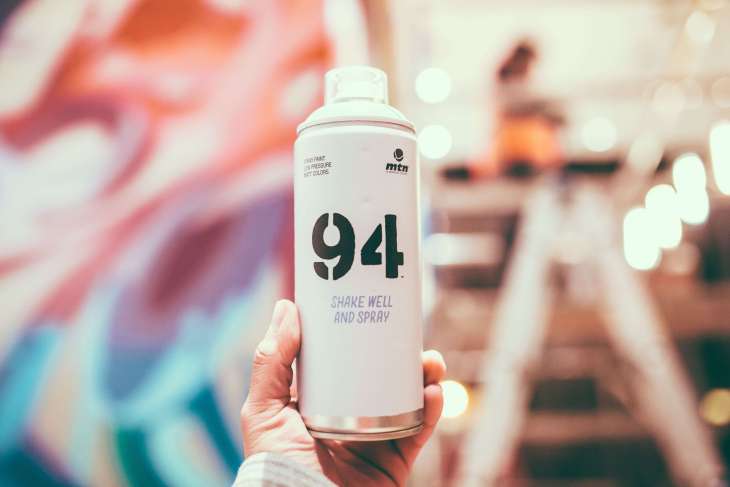How often do people check the label of household products they use on the daily? Behind the overwhelming list of ingredients, what should we really look out for? It is alarming that most people don’t realize that a lot of everyday products that are seemingly benign have toxins that can pose some serious implications on our health.
Cleaning your house is as bad as smoking several packs of cigarettes a day.
That may sound crazy, but the caveat is simple: if you are using cleaning sprays with high concentrations of volatile organic compounds (VOCs), you are in just as much risk of respiratory disorders as a chronic smoker.
The American Lung Association warns that inhalation of volatile organic compounds can cause adverse effects to your health, including nausea, difficulty in breathing, allergies, headaches, damage to the central nervous system and even cancer.
VOCs should be getting more attention
VOCs aren’t a common household topic, but they should be. People spend 90% of their time indoors. The quality of indoor air has a great effect on quality of life, and yet even innocent actions such as cleaning expose people to far greater risks.
So how does this work out for you and your family? You may be surprised that the same compounds found in cleaning sprays are present in many household products, many of which may already be in your home as you are reading this. What products are you using that could put you at risk?
5 Household Products You Didn’t Know Are Toxic
Air Fresheners
The worst offender by far, averaging to about 696 milligrams (mg) of VOCs released per use, would be spray air fresheners. Pretty ironic – for something called as ‘air freshener’, each spray doubles the amount of VOCs present in a typical 15 x 15-foot room.
- Ingredients to look out for: benzene, formaldehyde, acetone, toluene, pthalate esters
- Adverse effects on humans: Benzene is a known carcinogen and can lead to vomiting, dizziness, rapid heartbeat and even death when ingested.
Wet Wipes
Often used to clean up a mess or your hands and even your face in a pinch, wet wipes are the ultimate convenience item to have in a purse. The quick evaporation of the cleaning solvent used, however, immediately releases a lot of VOCs into the air. It’s even more alarming to consider that many of these products are marketed as baby wipes, meant for use on that most delicate of human beings.
- Ingredients to look out for: benzyl alcohol, phenoxyethanol, glycol
- Adverse effects on humans: These ingredients can cause asthma, skin irritation, allergies, and other respiratory problems.
Rubbing Alcohol
Most rubbing alcohol is made of isopropyl alcohol, which by itself is not highly-toxic when ingested, but the solvent evaporates rapidly in the air and releases a lot of VOCs into the atmosphere, so inhalation should be minimized to prevent issues.
- Ingredients to look out for: Only use in moderation
- Adverse effects on humans: Excessive inhalation of the fumes are known to cause problems like headaches, nausea, vomiting, irritation of the mucous membranes, and difficulty in breathing.
Perfume
Seen as an absolutely essential beauty product, perfumes are meant for the senses, but you may want to cut back on just how much you spray. Perfumes commonly contain benzyl alcohol, ethyl acetate, ethanol, acetone, and a hose of other ingredients that can cause troublesome side effects. The scents used in perfumes often mask these underlying ingredients, which are often added to prolong the effectiveness of the scents.
- Ingredients to look out for: benzyl alcohol, ethyl acetate, ethanol, acetone
- Adverse effects on humans: These compounds are known to cause dizziness, nausea, respiratory irritation, and other problems including cancer over a long period of time
Cleaning Sprays
While most people feel that cleaning sprays do them a favor by getting rid of germs and bacteria, the truth is by nature these sprays kill bacteria, and to do so they must have toxic chemicals. Cleaning sprays typically contain chlorine, ammonia and glycol, which can cause health problems when inhaled, in addition to stronger antibacterial agents such as triclosan, which is linked with endocrinal diseases which disrupt hormone production.
- Ingredients to look out for: chlorine, ammonia, glycol
- Adverse effects on humans: respiratory disorders, endocrinal diseases
While there’s still a lot of science that needs to be done to figure out the exact dangers in the long-term when dealing with these products, it doesn’t hurt to have the means to detect the quality of the air you are breathing on your own. It’s always best to keep the home well-ventilated, and having an indoor air quality sensor can really help you become aware of any potential dangers in your home, and then taking the steps to safeguard yourself and your family.


